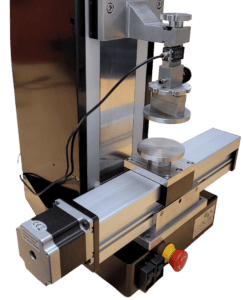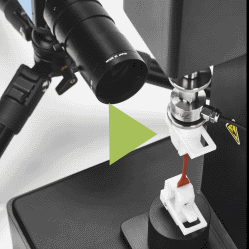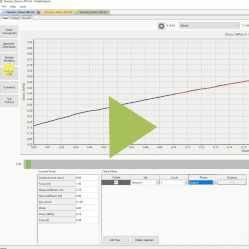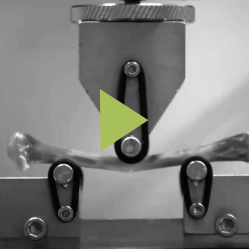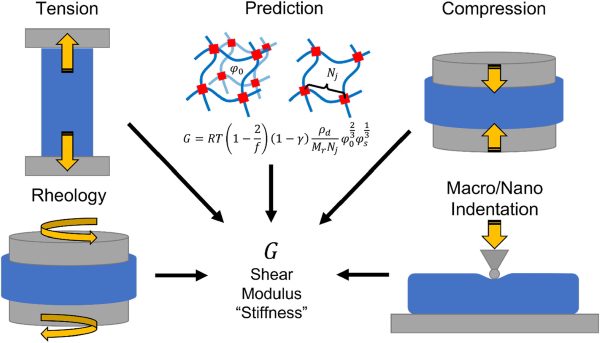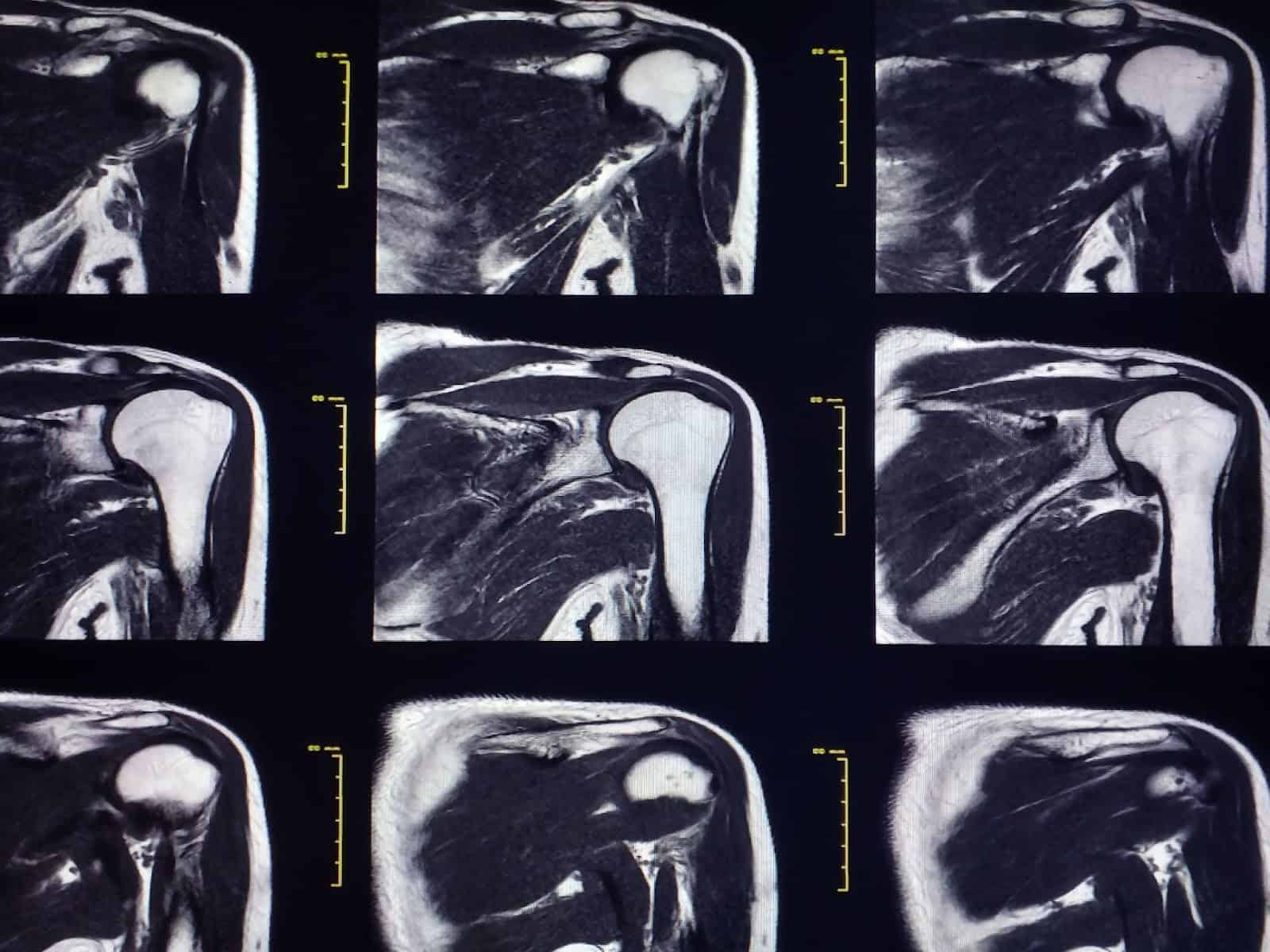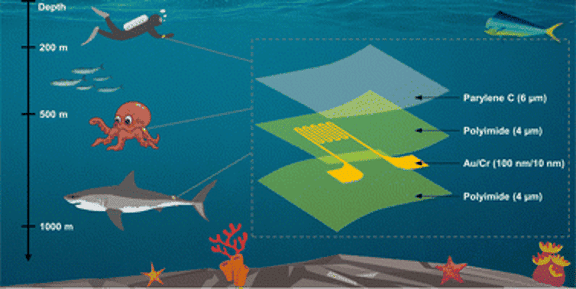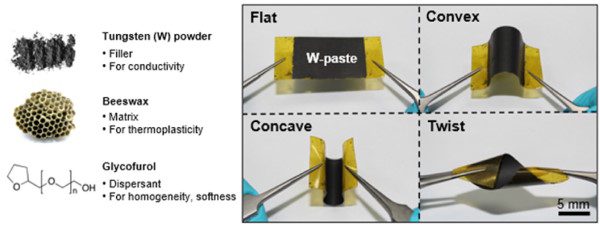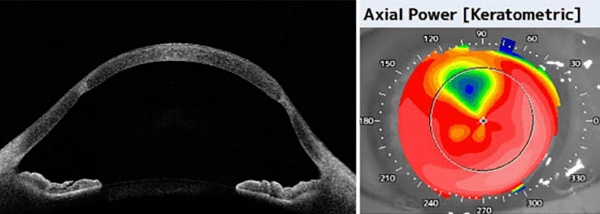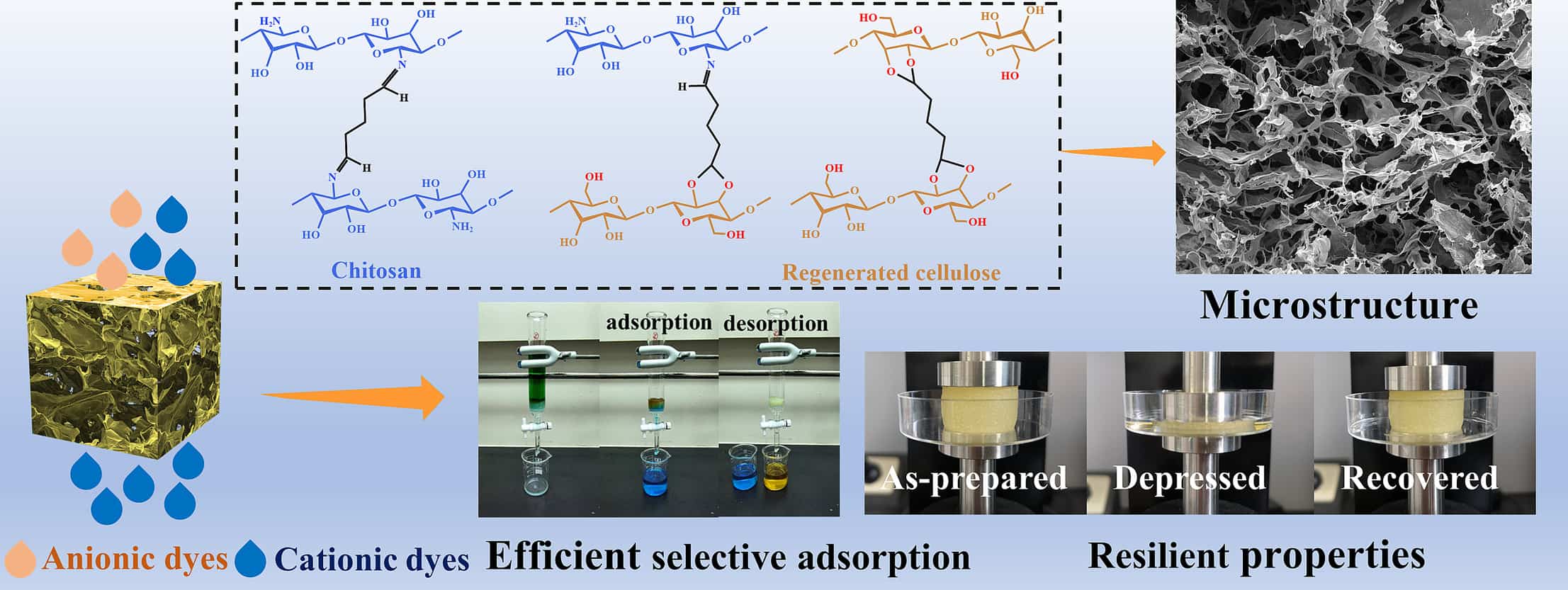UniVert
Precision Mechanical Test Machine for Your Lab Bench
The UniVert universal material testing machine provides critical mechanical property data for research in natural tissues, 3D bio-printed structures, orthopedic devices, and more.
The compact size and budget-friendly price of the UniVert S makes it possible to access testing capabilities exactly when and where they’re needed. The larger force capacities and extended range of the UniVert 1kN and 10kN are suitable for a wide range of materials.
Key Features
- Quality, cost-effective testing in a compact design
- User-friendly with easy-to-change fixtures and load cells for various applications
- Integrated imaging for test visualization, analysis, and presentation
- Comprehensive user interface software for straightforward, cyclic, relaxation, and multi-modal testing with immediate feedback
- Integrated environmental chambers
- Optional secondary axes for shear, torsion, or pressure testing
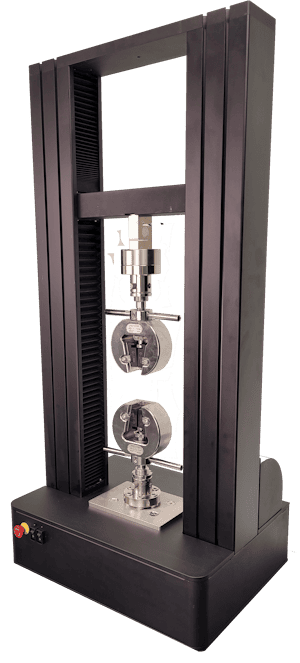
TECHNICAL INFO
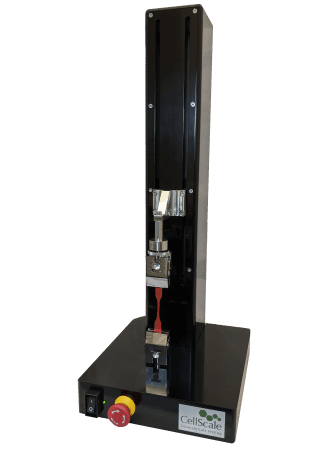
| UniVert S (S2) | UniVert 1kN | UniVert 10kN | |
| Capacity (N) | 200 | 1,000 | 10,000 |
| Load Cells (N) | 0.05 – 200 | 0.05 – 1,000 | 0.05 – 10,000 |
| Stroke (mm) | 300* | 300* | 800* |
| Max Velocity (mm/s) | 20 (100) | 20 | 20 |
| Max Acceleration (m/s2) | 1 (2) | 1 | 1 |
| Max Cycle Frequency (Hz) | 2 (10) | 2 | 2 |
| Max Data Rate (Hz) | 100 (500) | 100 | 100 |
*Longer stroke available on request
Tension
Summary
Specimens are typically clamped and pulled at a defined displacement rate while force/displacement data is captured. Force-controlled testing and cyclic testing are also common.
Unique to Biomaterials
Specimens must be fixed to the tester without causing damage at the attachment site. Biomaterials are often soft, slippery, or have irregular shapes and require specialized fixtures to achieve optimal results.
Most biomaterials testing applications require image-based measurement techniques to directly measure specimen geometries and strain values.
Common Applications:
- Muscle, skin, and tendon tissues
- Blood vessels
- Plant structures
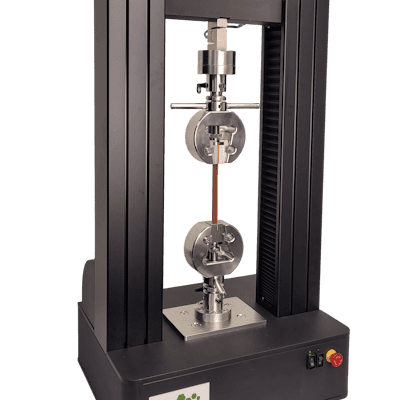
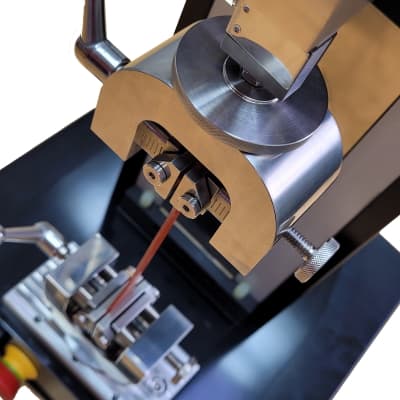
Compression Testing
Summary
Parallel plate compression involves crushing a specimen that typically has flat, parallel upper and lower surfaces and a constant cross section. Variations include indentation (spherical or other geometries), puncture, and burst testing.
Unique to Biomaterials
Time-correlated images are helpful to understand test results, especially if the specimen geometries are irregular or material properties are non-homogeneous.
Very small fixtures and low-force sensors are commonly used with the UniVert to test small delicate materials. The MicroTester is optimized for for even smaller specimens and can achieve force resolutions of 10nN.
Common Applications
- Hydrogels
- Bone
- Cartilage
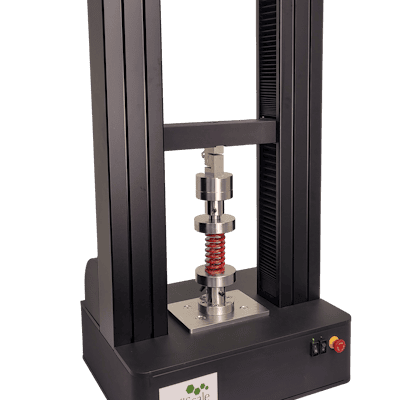
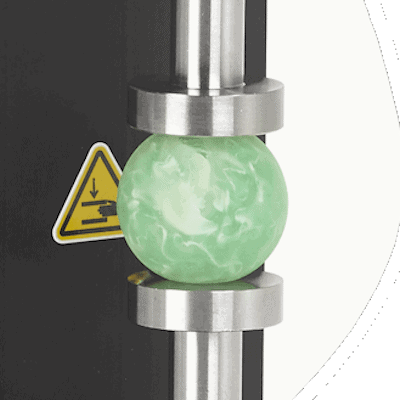
Bending
Summary
Specimens are typically long and thin and are supported at each end by fixed supports. Load is applied at 1 or 2 points between the fixed supports for 3 or 4 point testing. This is often a test to failure.
Unique to Biomaterials
The irregular shapes and variability in biological structures require appropriate fixtures, protocols, and expertise to ensure reliable data. Time-correlated images are helpful to understand test results, especially if the specimen geometries are irregular or material properties are non-homogeneous.
For very delicate specimens such as plant fibers or small tissues, the MicroTester highly suitable and can achieve force resolutions of 10nN.
Common Applications
- Rodent long bones
- Orthopaedic devices
- Plant structures
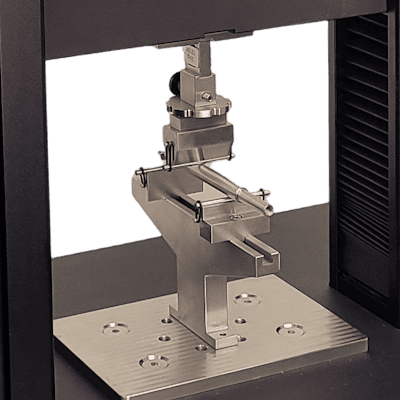
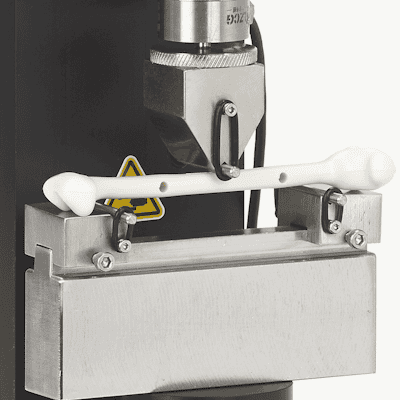
Shear & Peel
Summary
Peel testing is used to characterize the strength of the adhesion of one material to another. Shear testing to characterize a material’s response to shear loads or the adhesion strength of one material to another with a shear load.
Unique to Biomaterials
Biomaterials are often soft, slippery, or have irregular shapes and hence require specialized fixtures to achieve optimal results.
Adhesion is often affected by temperature and humidity. The UniVert can be efficiently equipped with the necessary environmental control accessories.
Common Applications
- Tapes, glues, and sealants
- Rubbers, gels, and other soft 3-dimensional materials
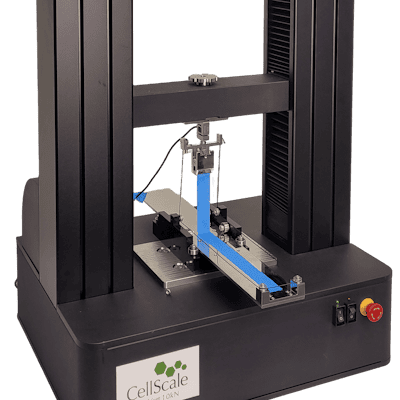
Fatigue / High Rate
Summary
Fatigue testing involves loading a specimen over many cycles to determine the impact on its mechanical response. Testing modalities include tension, compression, bending, and inflation, among others. High-rate testing involves loading the specimen at velocity to determine how the response of the material varies with strain rate.
Both fatigue and high strain rate testing benefit from an actuator capable of high accelerations and velocities. The UniVert system can be fitted with an auxiliary actuator to efficiently meet these requirements.
Unique to Biomaterials
This type of testing is necessary musculoskeletal and cardiovascular tissues that would normally be subjected to cyclic loading in vivo. For basic research, the test setup can be easily configured to replicate in vivo conditions. For some orthopaedic materials and applications, established test standards exist.
Common Applications
- Musculoskeletal tissues and synthetic alternatives
- Cardiovascular tissues such as arteries and heart valves
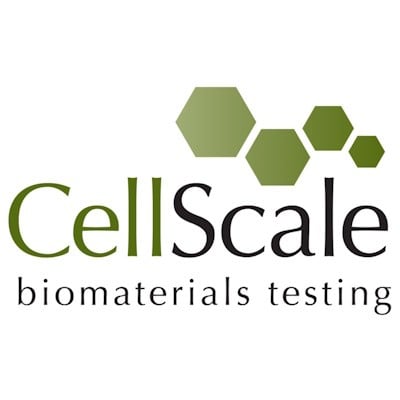

Pressure
Summary
Pressure testing involves controlled inflation of tubular samples, such as arteries, lumens, or other biomaterials. It features a pressure regulator and piston system that allows researchers to inflate samples up to 100 kPa, while recording pressure readings in real time. This setup provides a reliable method for assessing the mechanical response of soft tissues and biomaterials under pressurized conditions.
Unique to Biomaterials
This testing function is particularly useful for studying vascular biomechanics, helping researchers evaluate the strength, compliance, and failure properties of arteries and other tubular structures.
Common Applications
- Inflation of arteries for assessment of cardiovascular implant development
- Disease modeling and tissue engineering
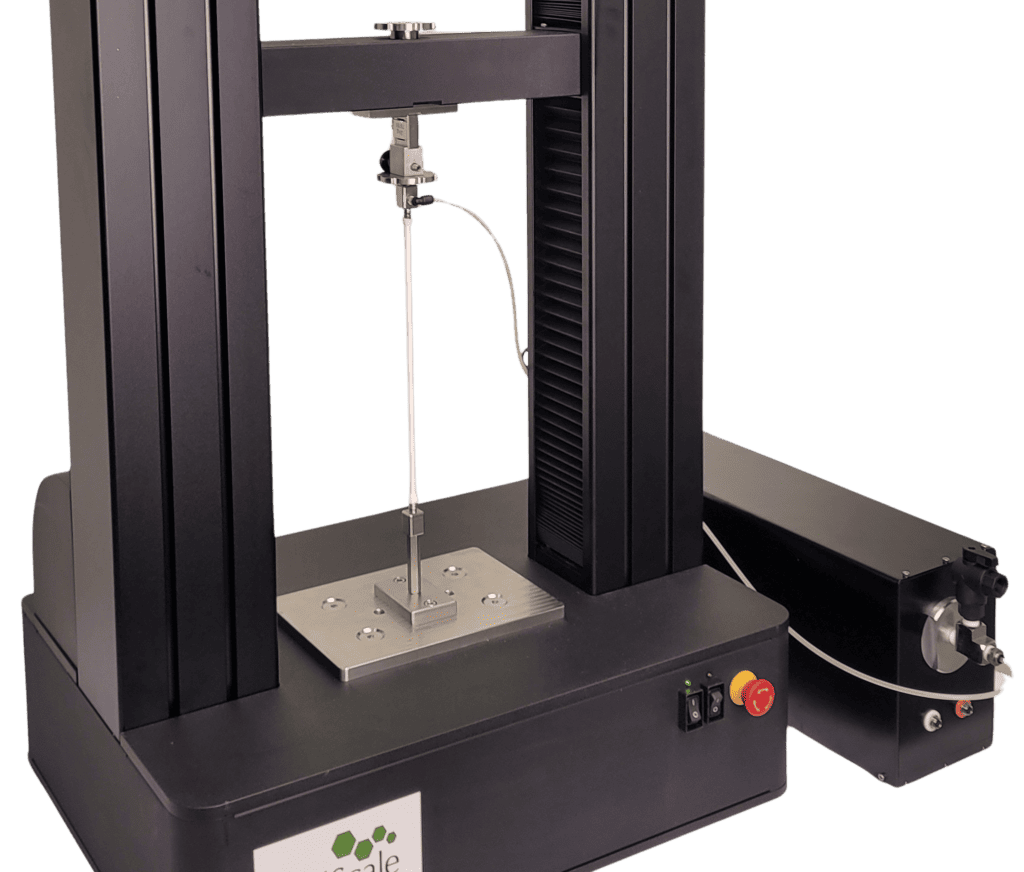
Torsion
Summary
Specimens are typically supported at each end by platens (with compressive load), grips, or jaws similar to a drill chuck. Any protocol specified in terms of axial displacement, axial force, torque, or rotation can be specified.
Unique to Biomaterials
This type of testing is often used to evaluate bones, joints, or similar synthetic materials. The UniVert system can be easily configured to match protocols used in previous research.
Common Applications
- Rodent long bones and/or joints
- Arteries
- Composite materials
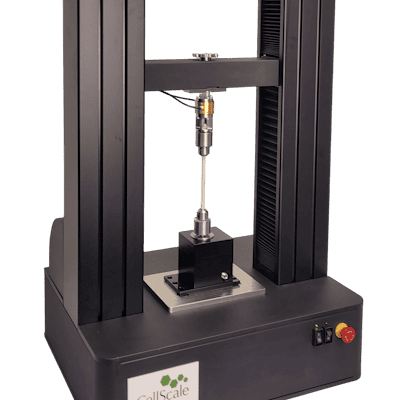
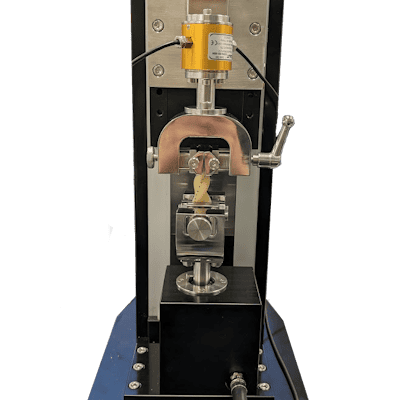
Combined Loading
Summary
The UniVert is always equipped with uniaxial linear testing capabilities. In addition, it can support up to 2 additional loading mechanisms. All of these subsystems can be used simultaneously in a single test protocol. Common configurations include:
- torsion-tension (e.g. arteries)
- torsion-compression (e.g. joints)
- tension-pressure (e.g. arteries)
- compression-shear (e.g. muscle)
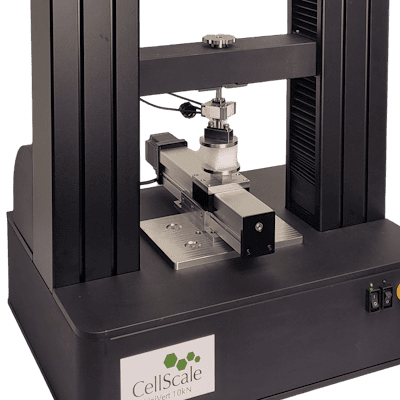

Less than 0.1N Force Range
Summary
The UniVert systems can be used for testing between 0.1N and 10kN. For testing below 0.1N, the use of the MicroTester system is recommended.


0.1 – 1 N
Summary
The CellScale Eclipse low-force sensors are now available to work with the Univert system! These patent-pending sensors provide unparalleled force sensitivity and overload protection. They are compatible with custom fixtures for tension, compression, indentation, and other test types.
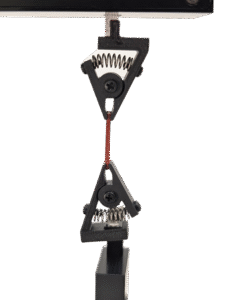
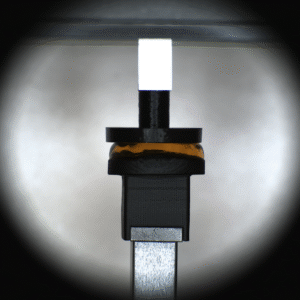
1 – 10 N
Summary
In this force range, the UniVert is typically equipped with a miniature S-beam load cell and plastic fixtures to minimize the offset force. These sensors and fixtures are available for the UniVert S, 1kN, and 10kN models.
Common Applications
- Small animal tissues
- Hydrogels
- Rubbers and other compliant materials
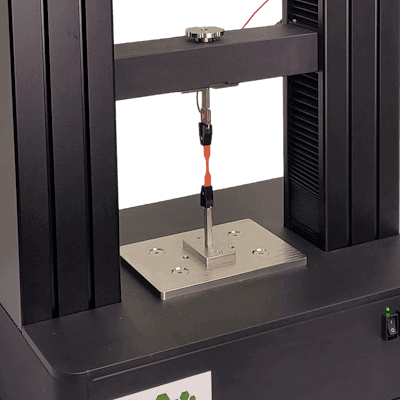
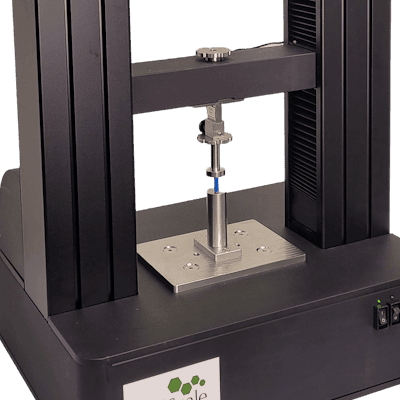
10 – 100 N
Summary
In this force range, the UniVert is typically equipped with a miniature S-beam load cell and plastic fixtures to minimize the offset force. These sensors and fixtures are available for the UniVert S, 1kN, and 10kN models.
Common Applications
- Small animal tissues
- Hydrogels
- Rubbers and other compliant materials
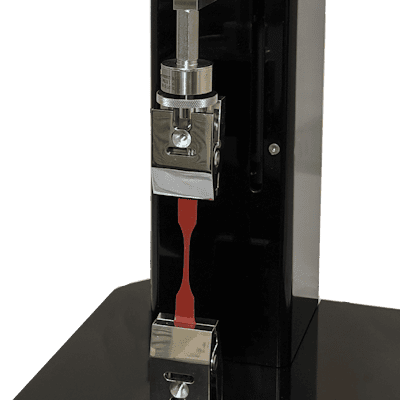

100 – 1000 N
Summary
In this force range, the UniVert is typically equipped with an S-beam load cell and stainless steel fixtures to suitably support the test specimens. These sensors and fixtures can be fitted to the UniVert S (max 200N), 1kN, and 10kN models.
Common Applications
- Small specimens of all types
- Educational labs (particularly UniVert S model)
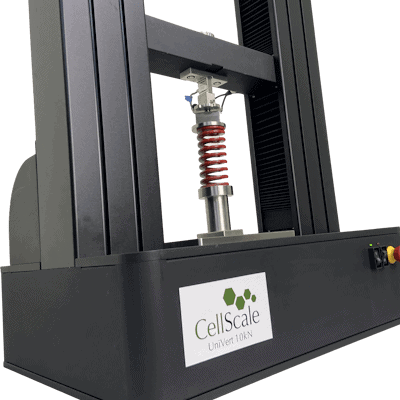

1000 – 10,000 N
Summary
In this force range, the UniVert is typically equipped with an S-beam load cell and stainless steel fixtures to suitably support the test specimens. These sensors and fixtures can be fitted to the UniVert 10kN models.
Common Applications
- Specimens of all types
- Departmental facilities


Strain Control
Summary
For any given test, the specimen may not deform as expected due to grip slipping, non-uniform material properties, or misalignment. When equipped with an upgraded imaging system, the UniVert software can measure the specimen strain is real-time by tracking features on the specimen surface. This information is used to modulate the cross head motion to achieve the strain profile prescribed in the test method. This ensures that the results of multiple tests can be easily compared and that combined loading protocols are well synchronized.
Unique to Biomaterials
Biomaterials are often more complex than other engineered materials. Using non-contact strain measurement to achieve true strain control is a powerful tool for materials characterization.
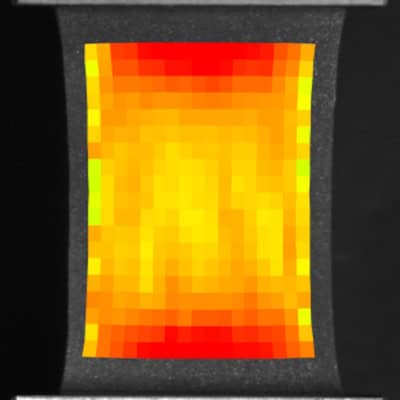
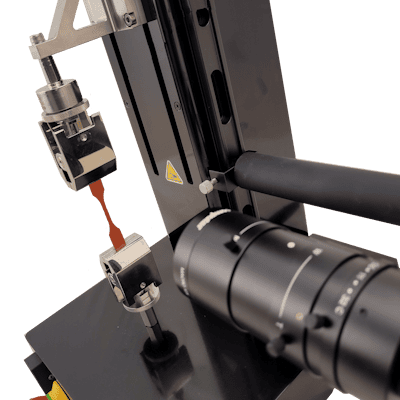
Liquid Baths
Summary
Temperature-controlled fluid liquid baths are used to maintain consistent hydration and temperature conditions when working with certain materials
Unique to Biomaterials
This type of testing is often used in musculoskeletal and cardiovascular tissues that would typically be subjected to cyclic loading in vivo. For basic research, UniVert systems can be easily customized to replicate in vivo conditions. For some orthopaedic materials and applications, established test standards exist
Common Applications
- Musculoskeletal tissues and synthetic alternatives
- Cardiovascular tissues such as arteries and heart valves
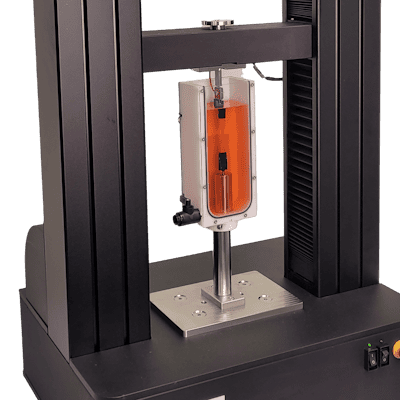
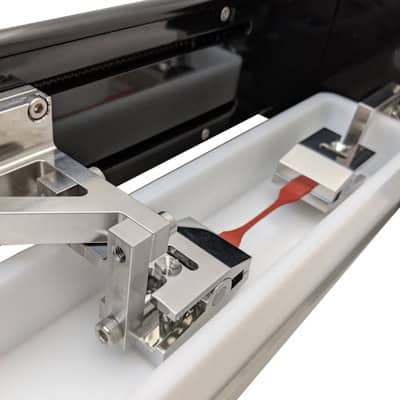
Custom Solutions
Summary
Due to the wide variety of applications within the biomaterials space, the UniVert has been carefully designed with a broad range of configurations. Even so, there is often a need for custom fixtures, controls, environmental accommodations, or other functionality. CellScale has a long history of successfully and efficiently collaborating with our customers to achieve successful research outcomes.
If you have a specialized application, we would be glad to support your research with a custom solution.

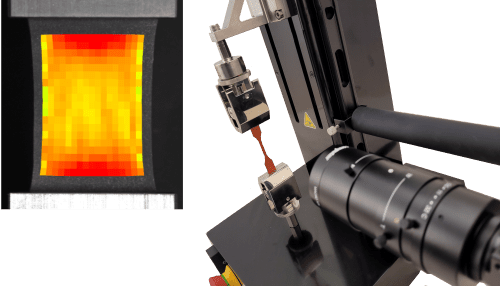
Non-contact tools for strain control
In strain control protocols, real-time image analysis of the specimen strain is used to achieve the specified strain profile. For all test types, with the scientific camera upgrade, our system uses Digital Image Correlation (DIC) for more advanced strain mapping tools, that are available to fully characterize the specimens strains, compare tests, and output data for more extensive modelling and analysis.
UniVert S, 1kN and 10kN
Achieve forces up to 10kN with our universal material testing machine. All systems are compatible with fluid baths, imaging, non-contact strain measurement, and auxiliary axes for shear, torsion, or pressure.
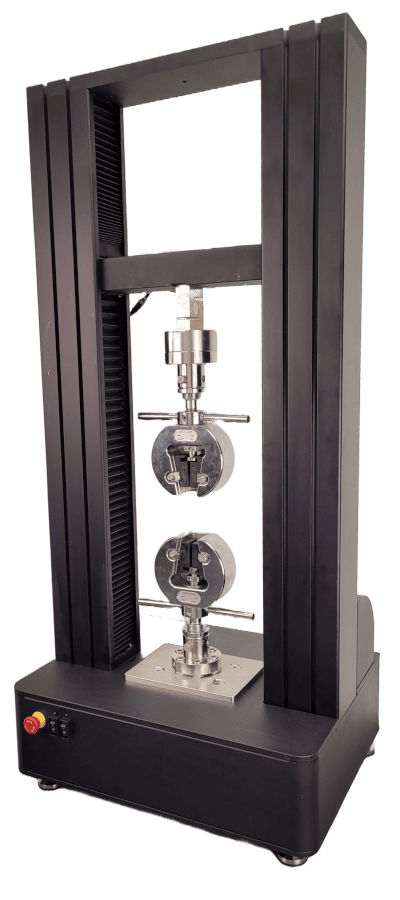
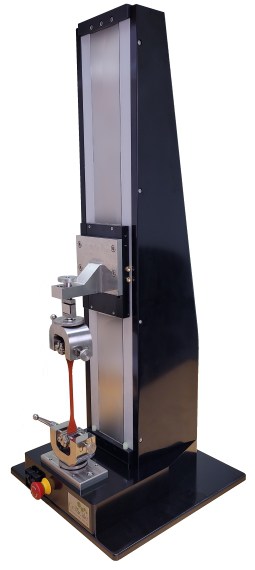
Fluid Baths
The UniVert systems can be equipped with a horizontal or vertical temperature-controlled fluid bath to ensure sensitive biomaterials are tested under the appropriate conditions.
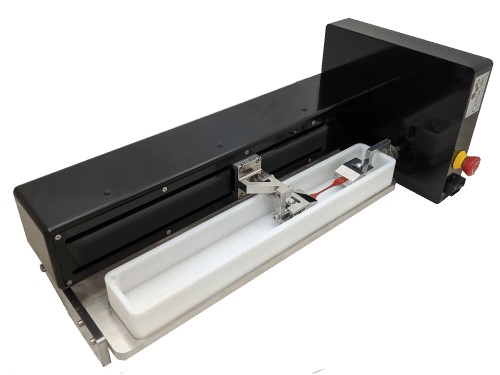
Specimens & Mounting

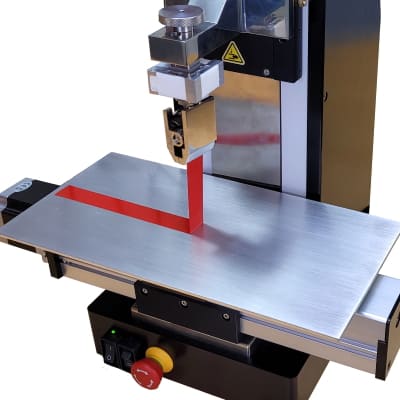
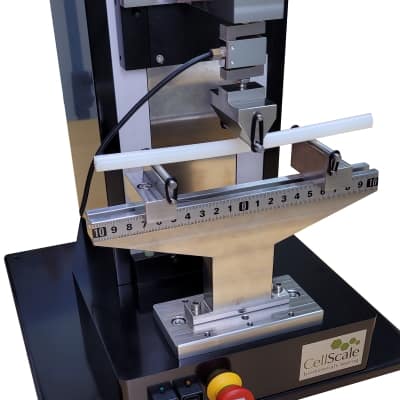
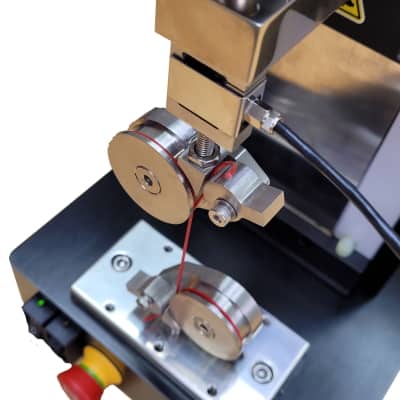
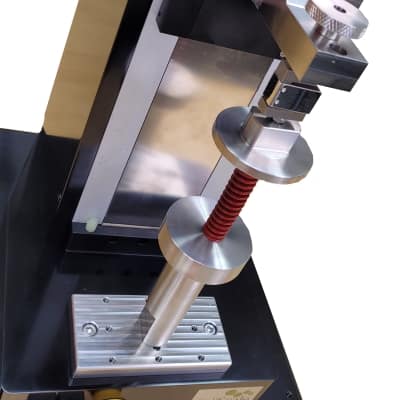
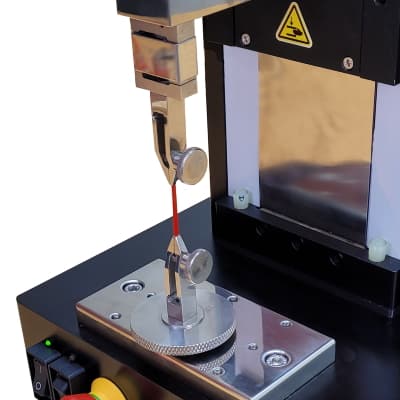

Multiple Axis Testing
Shear, twist, and pressure axes can be added to the primary linear test axis to test a wide range of specimens. These actuators and sensors integrate seamlessly with the device controller, software and data output.
Publications
DOWNLOADS
If you would like help with updating your device software, please contact the CellScale team for free support.

